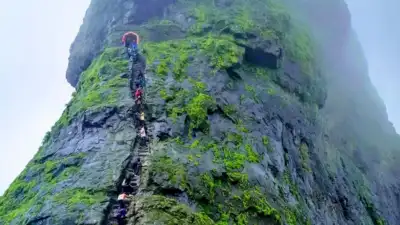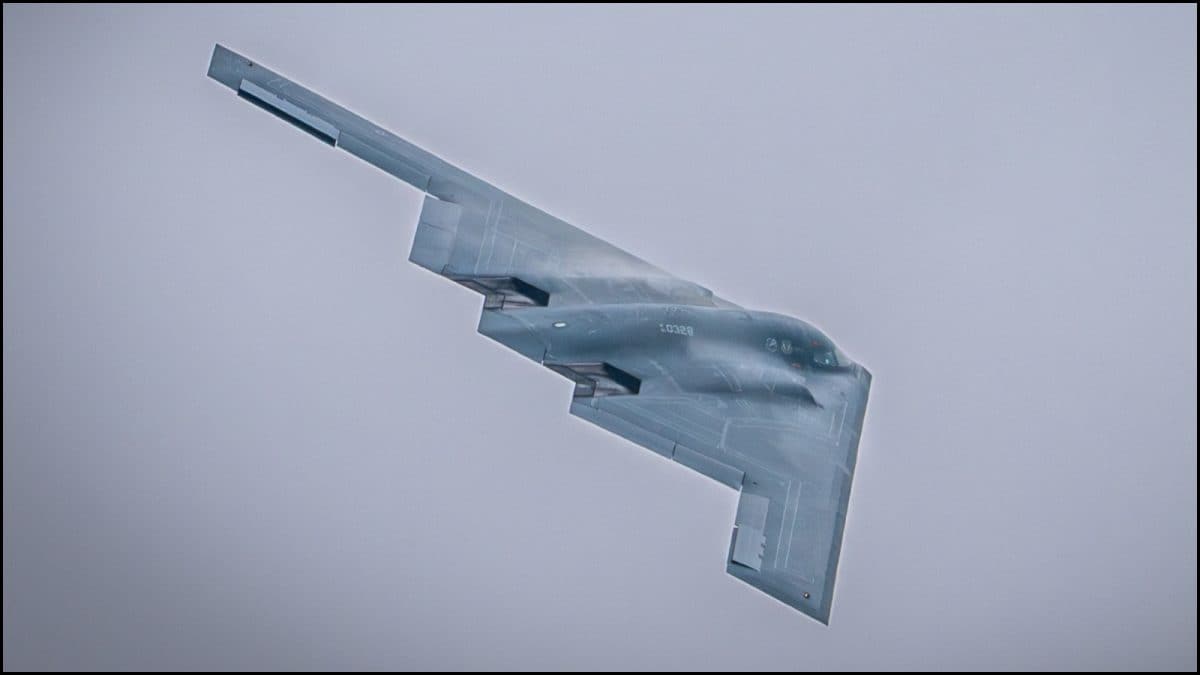ARTICLE AD BOX

Image: https://x.com/Fall_of_Civ_Pod
If you’ve ever dreamed of climbing a stairway to the sky—literally—Harihar Fort is your calling. Perched at a dizzying 3,600 feet and more, above the sea level in Maharashtra’s Nashik district, this ancient fortress is part architectural genius, part adrenaline-pumping trek, and part history lesson with a jaw-dropping view.
You've probably seen it pop up on Instagram—those steep, vertical rock-cut stairs that look like they belong in an Indiana Jones movie. Harihar Fort is so much more than just a viral trekking destination.
The staircase was carved at an insane angle—and it's 800 years old
Let’s start with the obvious star: that staircase. Nearly vertical, almost 80 degrees, and carved directly into the rockface—these steps are an engineering marvel. Built during the Yadava dynasty (around the 13th century), the stairs still hold strong today despite the wild weather swings and thousands of trekkers stomping up and down them every year.Fun fact: They weren’t just built for drama. The steep design actually made the fort harder to invade. Genius, right?
It's shaped like a triangle—and no, that's not a coincidence
From afar, the fort looks like a giant triangle rising out of the Sahyadris. And it's not a random design. Historians believe that this triangular shape offered natural defense on all three sides, especially with cliffs that drop off into nothingness. So if anyone dared to invade, they’d have to take the literal high road—and risk slipping off the edge while doing it.
The name Harihar actually means ‘Vishnu and Shiva’ together
Here’s a spiritual twist: the name "Harihar" is a combination of “Hari” (a name for Lord Vishnu) and “Har” (a name for Lord Shiva). This duality is rare, and it's believed to symbolize balance—between creation and destruction, preservation and change. No one knows if the Harihar fort was named that way to reflect a religious purpose, but it adds a beautiful layer of meaning to the trek.
The rock-cut steps were meant to confuse and trap invaders
Yes, they’re breathtaking. But back in the day, those winding, narrow, odd-angled stairs served a darker purpose: confusing enemies.
The steps zigzag in ways that can disorient you, especially if you're wearing heavy armor or being chased. There are even intentional “blind turns” where someone could be waiting with a spear. Creepy, but clever.
The top has a flat plateau—but gets dangerously slippery during monsoon
Once you conquer the climb, the top of Harihar Fort greets you with a surprisingly flat surface. It feels almost like a reward—a wind-blown tableland with panoramic views of the entire Sahyadri range. But here’s the kicker: during monsoon season, the moss-covered stones turn into a slip-and-slide of doom.
So watch your step and maybe skip the risky selfies.
It’s surprisingly accessible—but still feels wild
Despite being only about 40 km from Nashik and easily reachable from Mumbai or Pune, Harihar Fort still feels like a wild escape. As per reports, there are two major routes: one via Nirgudpada village (the easier route) and another from Harshewadi (a little steeper but with fewer crowds). Harihar Fort isn’t just about climbing those crazy stairs or snapping a killer drone shot from the top.
It’s a slice of history, a test of endurance, and a poetic blend of natural beauty and human craftsmanship. Every rock here has witnessed centuries of change—dynasties rising and falling, armies marching, monsoons pounding, and now, urban trekkers gasping for breath.So the next time you see that viral stairway on your feed, remember—there’s a lot more to Harihar Fort than meets the eye.It’s not just a fort. It’s a time machine carved into a mountain.Disclaimer: Harihar Fort is a high-risk trek that involves steep rock-cut stairs, sharp drops, and unpredictable weather—especially during monsoon. Crowds can make the ascent and descent more dangerous. This article is for informational purposes only. Trekkers are strongly advised to wear proper gear, avoid overcrowded timings, and never attempt the climb without full awareness of the risks involved. Always prioritize safety and consider going with a trained guide or trekking group.



.png)
.png)
.png)
















 4 hours ago
3
4 hours ago
3









 English (US) ·
English (US) ·